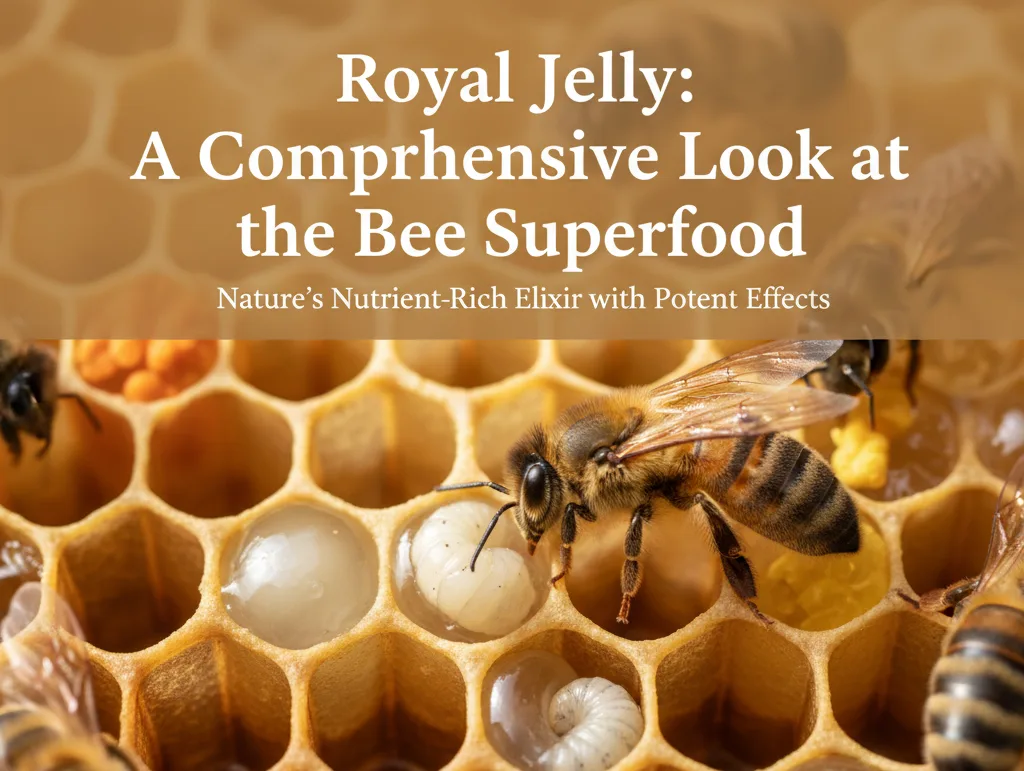Royal Jelly, a remarkable secretion from honey bees, has long been revered for its unique composition and potential health benefits. Often dubbed a "superfood," it is exclusively fed to the queen bee, contributing to her extraordinary size, fertility, and longevity compared to worker bees.
What is Royal Jelly?
Produced by young worker bees (typically 6 to 12 days old), Royal Jelly is secreted from the hypopharyngeal and mandibular glands located under their jaws and pharynx. This milky-white substance is the sole diet for the queen bee throughout her life and also nourishes young bee larvae for their first few days.
Nutritional Profile:
Royal Jelly boasts a complex and rich nutritional profile, consisting primarily of:
-
Water: Approximately 50-70%
-
Proteins: Around 15% (including unique royalactin, which is crucial for queen development)
-
Sugars/Carbohydrates: Roughly 13%
-
Lipids/Fats: About 7%
-
Vitamins, Minerals, and Acetylcholine: A vital neurotransmitter component necessary for nerve cell communication.
Potential Health Benefits and Traditional Uses:
Numerous studies and traditional practices attribute several potential health benefits to Royal Jelly, including:
-
Hormonal Support: Research suggests Royal Jelly may influence hormone levels, with mentions of increasing testosterone and supporting spermatogenesis (sperm production).
-
Metabolic Health: It has been linked to improving lipid and triglyceride profiles, potentially lowering cholesterol and LDL ("bad" cholesterol), and enhancing glucose tolerance.
-
Nervous System Health: The presence of acetylcholine is believed to contribute to improved nerve health.
-
Immune Modulation: Royal Jelly is thought to play a role in regulating the immune system.
-
Libido Enhancement: It may contribute to an increase in sexual desire.
-
Anti-inflammatory Properties: There are indications of its potential to reduce inflammation.
Important Considerations and Warnings:
While Royal Jelly offers a range of potential benefits, it is crucial to be aware of significant considerations and warnings:
-
Estrogenic Activity: Royal Jelly contains compounds that may exhibit estrogen-like effects within the body. Due to this potential, its consumption is strictly prohibited for individuals with breast cancer, especially hormone-sensitive types, to avoid any potential adverse interactions.
-
Allergic Reactions: As a bee product, Royal Jelly can cause allergic reactions in sensitive individuals. Symptoms can range from mild skin rashes to severe anaphylaxis. It is advisable to exercise caution, especially for those with known allergies to bee products or pollen.
-
Pregnancy and Lactation: There is currently a lack of scientific information regarding the safety of Royal Jelly consumption during pregnancy and lactation. Therefore, it is strongly advised that pregnant and breastfeeding individuals avoid using Royal Jelly products.
-
Hormonal Content: The presence of hormones like testosterone in some Royal Jelly products, as highlighted in some reports, further underscores the need for caution, particularly for individuals with hormone-sensitive conditions.
Conclusion:
Royal Jelly remains a fascinating natural product with a rich history of use and ongoing scientific interest. Its complex composition offers potential benefits for hormonal balance, metabolic health, and immune support. However, consumers must be well-informed about the crucial warnings regarding its estrogenic activity, potential for allergic reactions, and lack of safety data during pregnancy and lactation. Always consult with a healthcare professional before incorporating Royal Jelly or any new supplement into your regimen, especially if you have pre-existing health conditions or are on medication.

